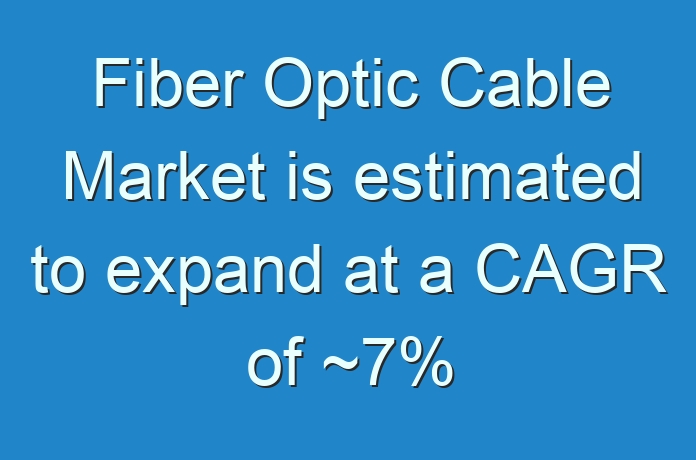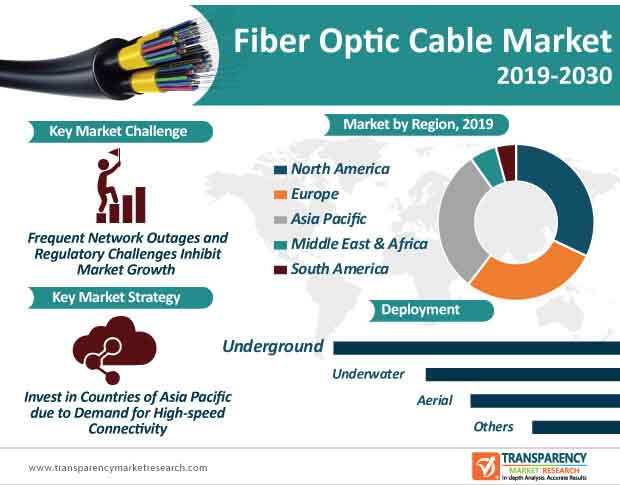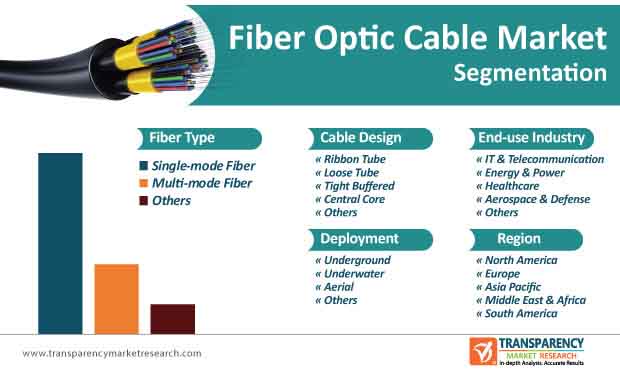
The global fiber optic cable market is predicted to undergo a recession period, due to the coronavirus (COVID-19) outbreak. Increased number of morbidity and mortality rates have caused a slowdown in revenue generation activities and affected the construction of fiber optic cable networks. Due to the high prevalence of COVID-19 cases in Western Europe, the construction of Fiber to the home (FTTH) networks has been temporarily halted. On the other hand, companies in the U.S. fiber optic cable market are gaining momentum for the construction of 5G network across cities. Thus, the extent of economic slowdown and the demand for optical products is varying as per different countries.
Uncertain ramifications of coronavirus are anticipated to cause a global recession with the issue of short-term unavailability of resources and capital for the construction of optic networks.

Request a sample to get extensive insights into the Fiber Optic Cable Market
Demand for High-speed Connectivity Emerges as Key Driving Force for Market Growth
The need to stay connected via the Internet has become crucial for individuals as well as international companies. Hence, companies in the fiber optic cable market are focusing on the deployment of cloud based storage solutions. As such, there is a growing need for sending and retrieving data at high speeds, high quality, and consistency. This has triggered the growth of the fiber optic cable market.

To understand how our report can bring difference to your business strategy, Ask for a brochure
On the other hand, countries in Asia Pacific such as Singapore, South Korea, and Japan are at the forefront to provide high-speed connectivity. This explains why the revenue growth of Asia Pacific is anticipated to progress at an aggressive speed. Moreover, companies in the market for fiber optic cables are expanding their business in European countries including Latvia and Czech Republic due to high demands for faster Internet speed. Companies in the market for fiber optic cables are increasing their focus in developing economies, since governments are increasing efforts to fund projects of fiber optic networks in the transportation infrastructure.
Transportation of Large Digital Content through FEC Fuels Demand for Fiber Optic Cables
Advancements in technology are being observed in the fiber optic cable market in order to support the transport of huge volumes of digital content. The increasing use of direct detection techniques between transmitters and receivers is another key driver that is fueling market growth. As such, the fiber optic cable market is estimated to cross ~US$ 15 Bn by the end of 2030. Thus, coherent detection techniques such as forward error correction (FEC) are some of the game changers that are deploying high-speed data transfers.
Stuck in a neck-to-neck competition with other brands? Request a custom report on Fiber Optic Cable Market
The Google Fiber project is catching the attention of the U.S. companies in the market for fiber optic cables, where the project focuses on revamping the cities’ Internet network. The U.S. companies in the market for fiber optic cables are focusing on building state-of-the-art networks that are capable of transferring large gigabits of data within seconds.
High Capacity Base Transceiver Stations Hold Potentials to Solve Network Outage Issues
The fiber optic cable market is estimated to register a striking volume CAGR during the forecast period. Moreover, the telecommunication industry in developing countries such as Ghana is undergoing a significant change, which has triggered the demand for robust fiber optic cable networks. As such, the IT & telecommunication industry dictates the highest revenue among all industries in the market landscape. However, frequent network outages are some of the biggest challenges that operators need to address. Hence, establishing state-of-the-art optical plants, correct system configurations, and high capacity base transceiver stations are among few solutions that can solve the issue of network outages.
Companies in the fiber optic cable market are adhering to government regulations to bolster their credibility in the market. For instance, mobile network operators (MNOs) in Ghana opine that the National Communication Authority and Ghana Telecommunication Chambers should collaborate with the MNOs to build uninterrupted fiber optic networks.
Read Our Latest Press Release:





